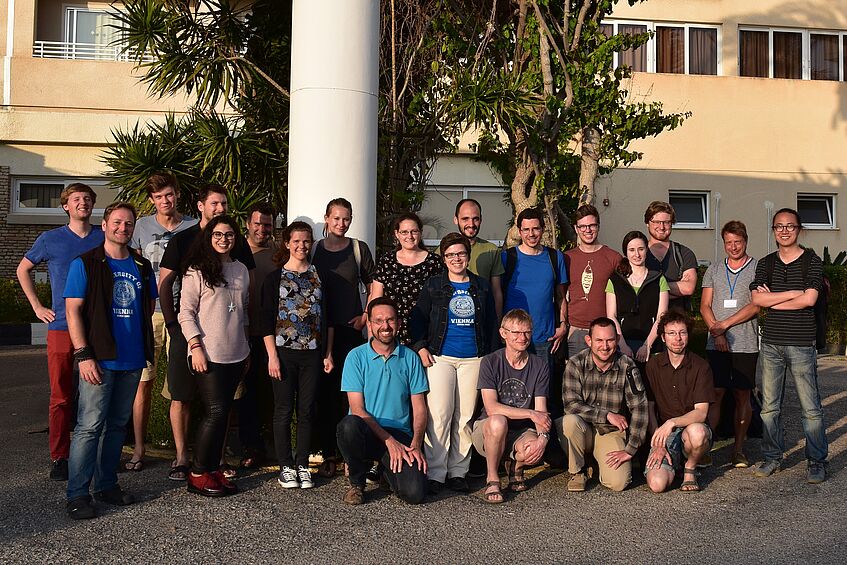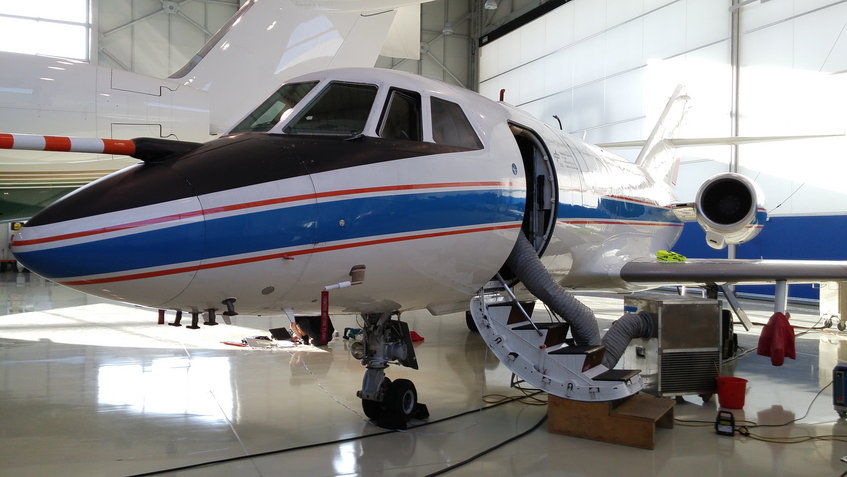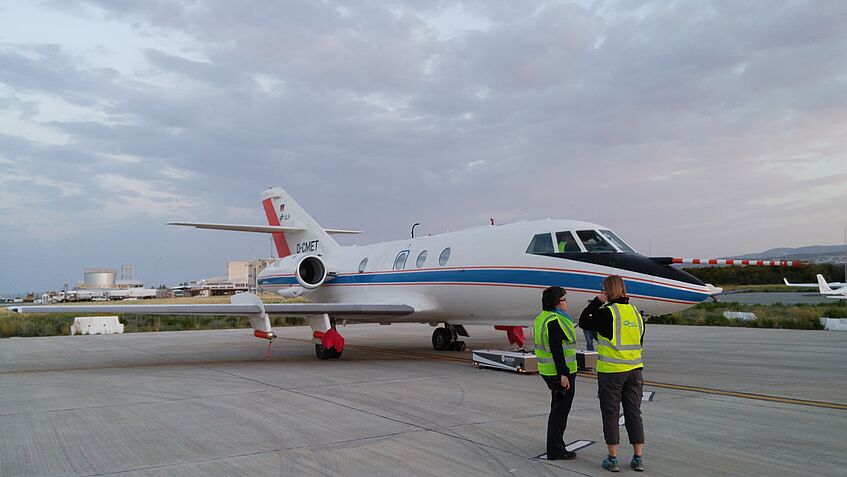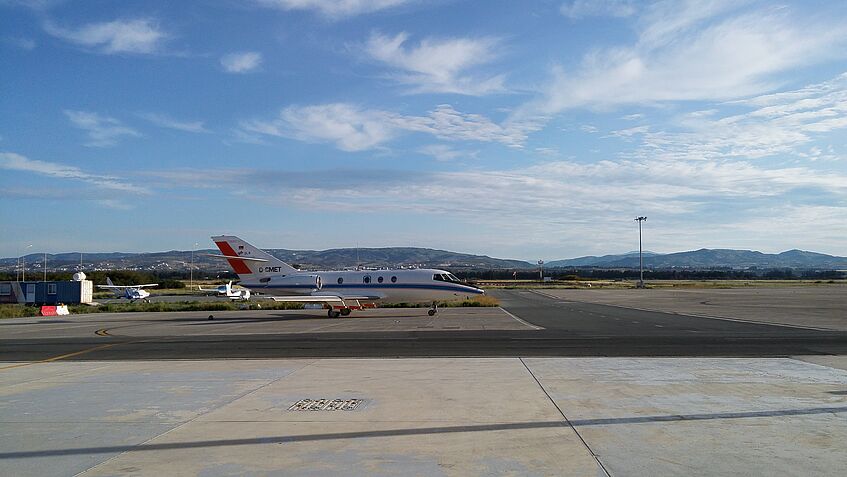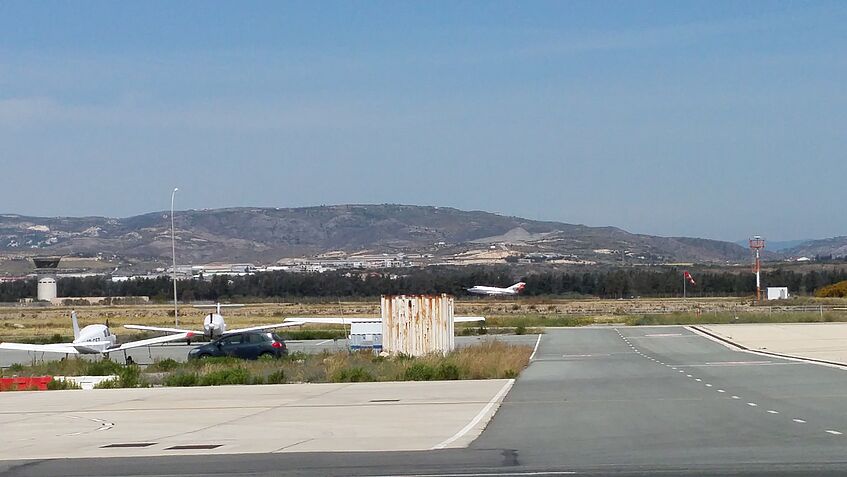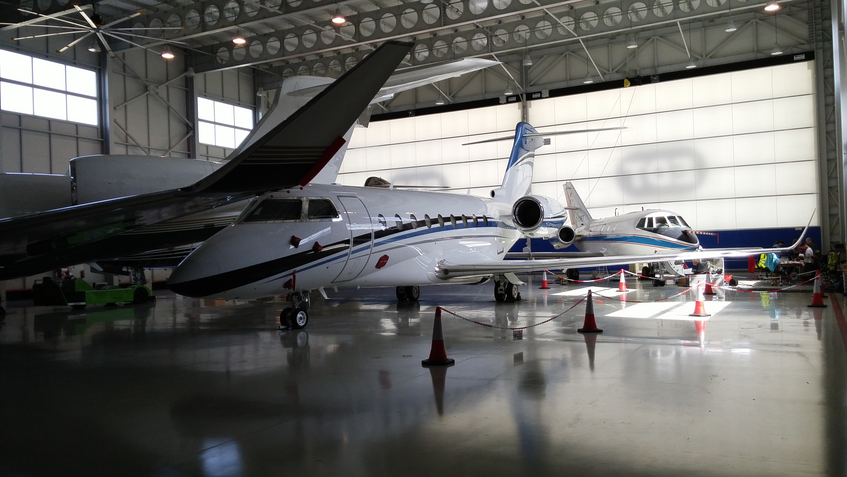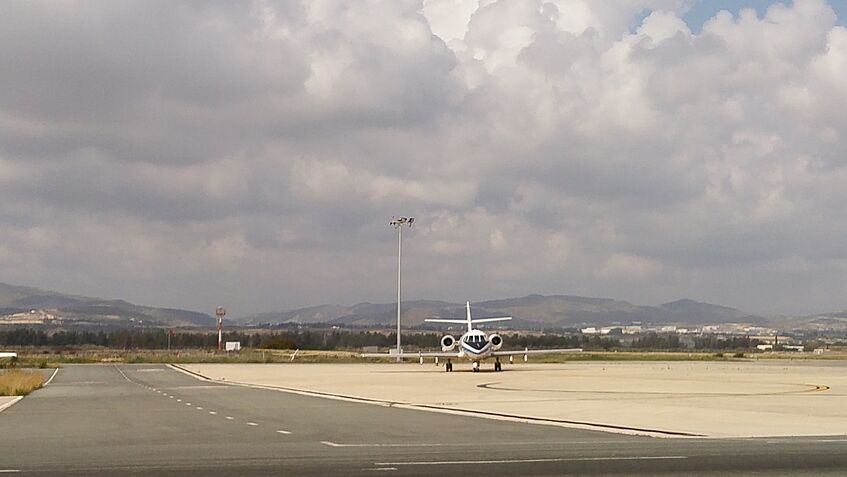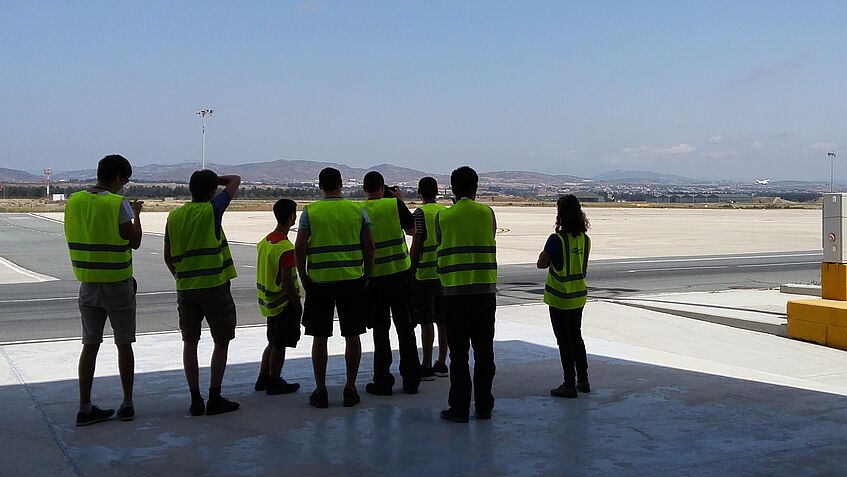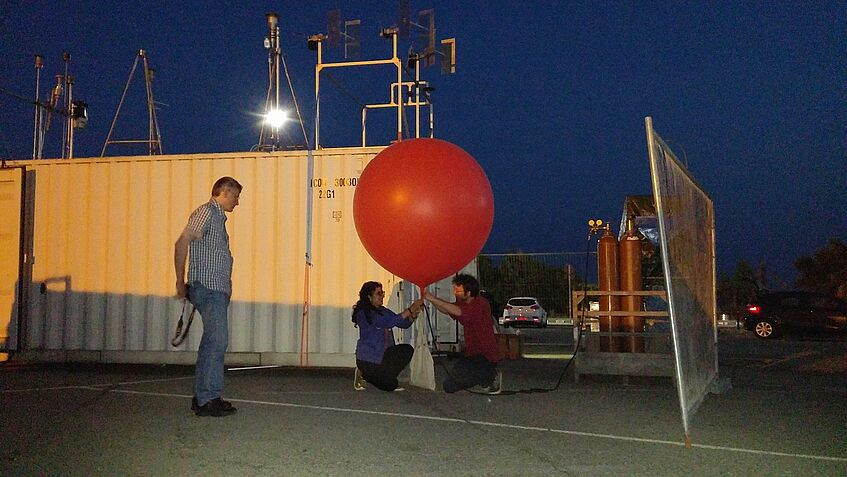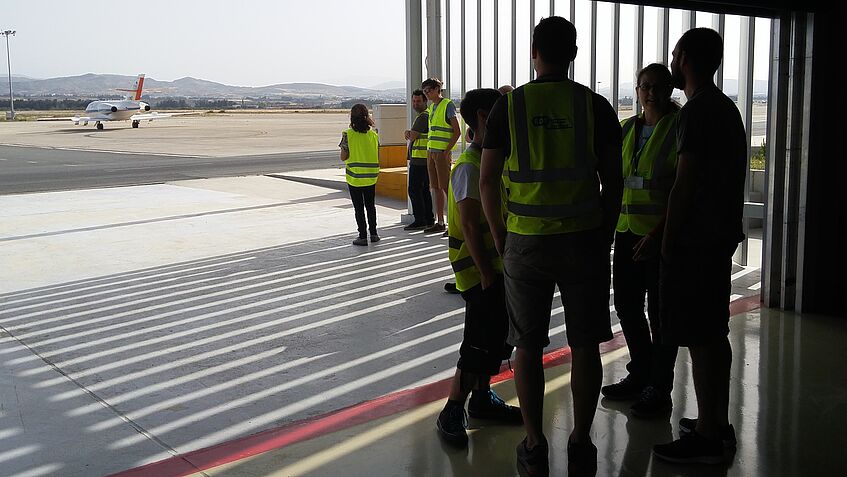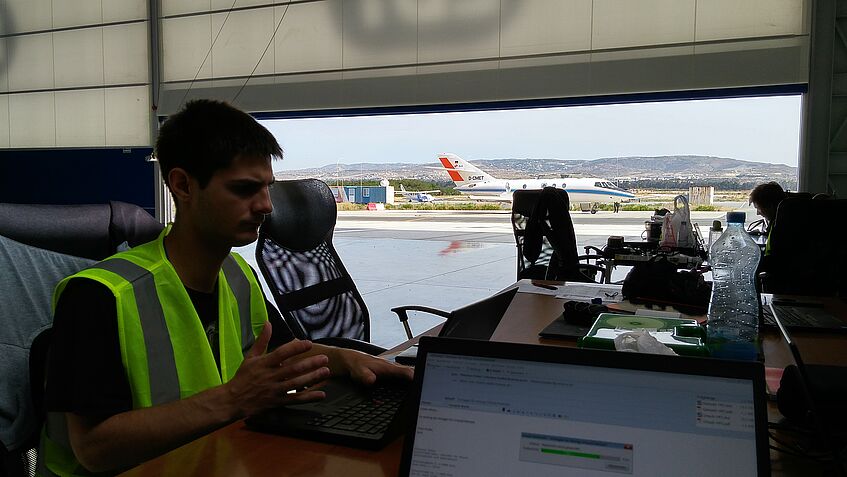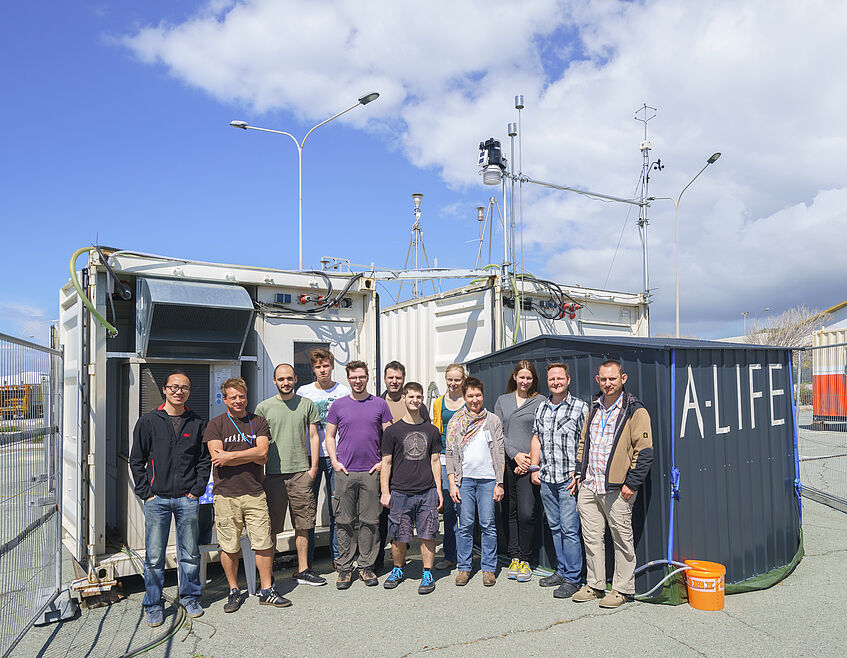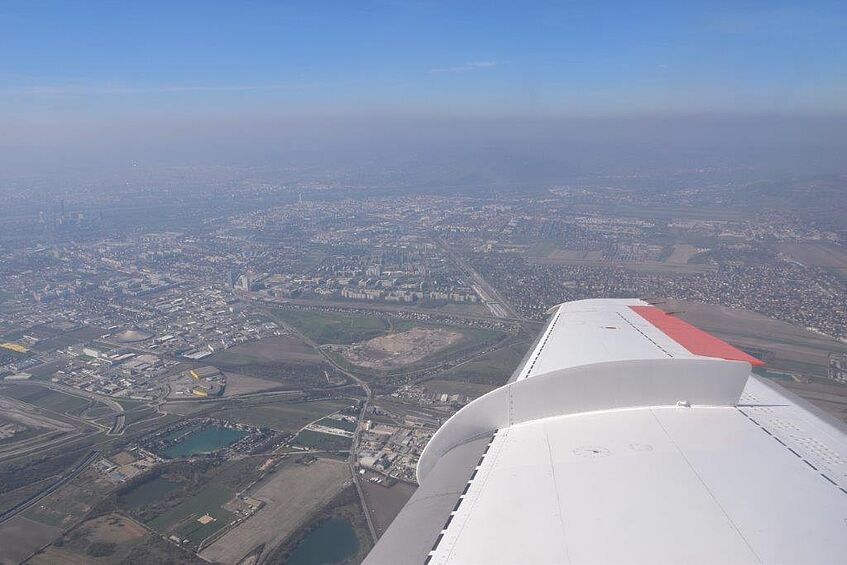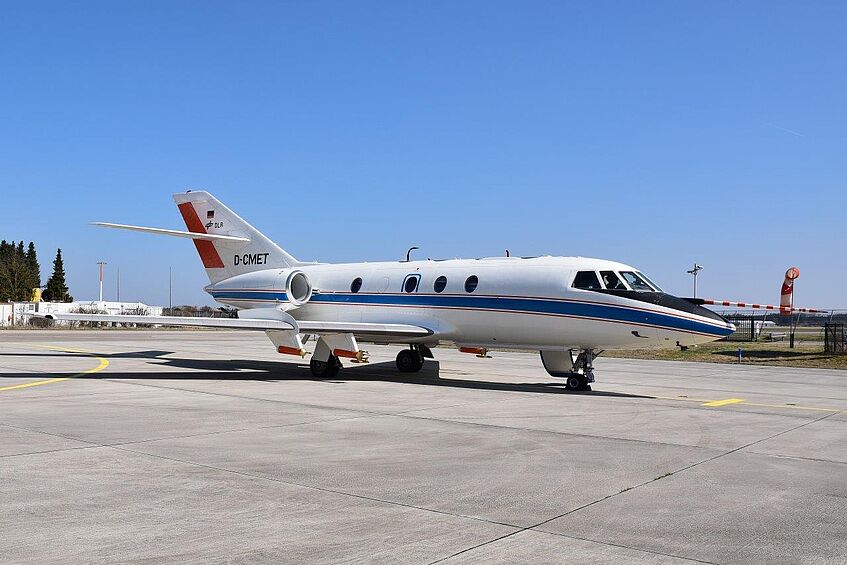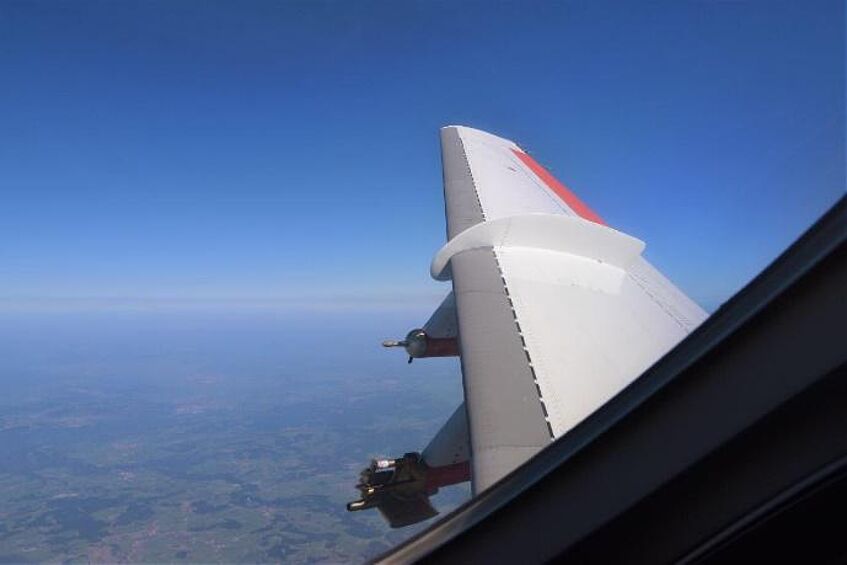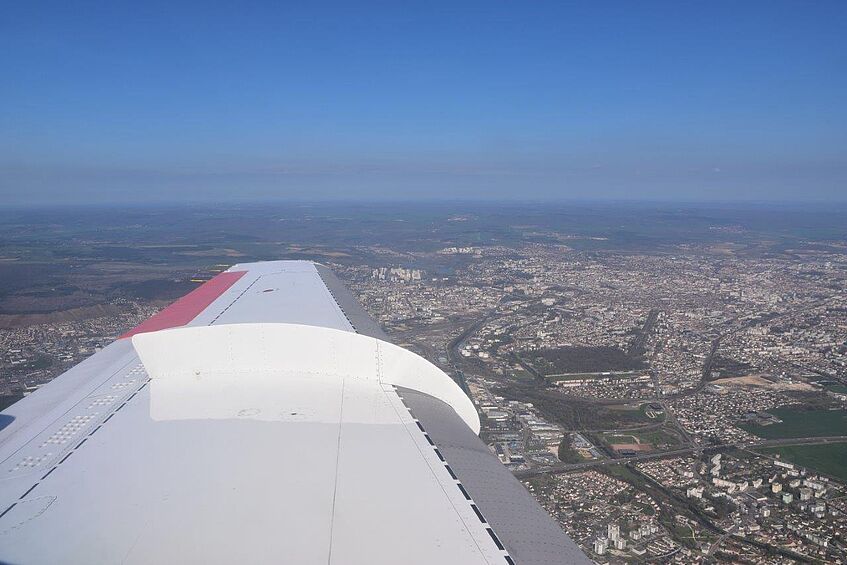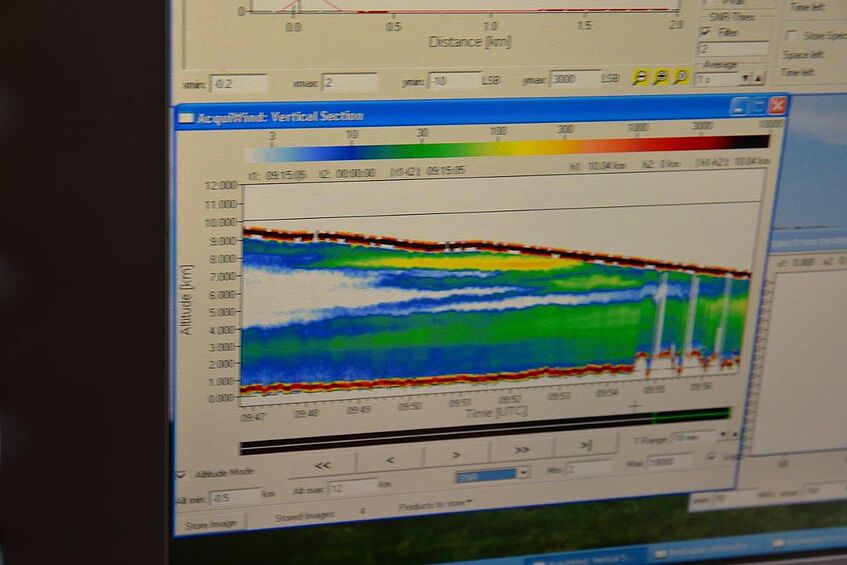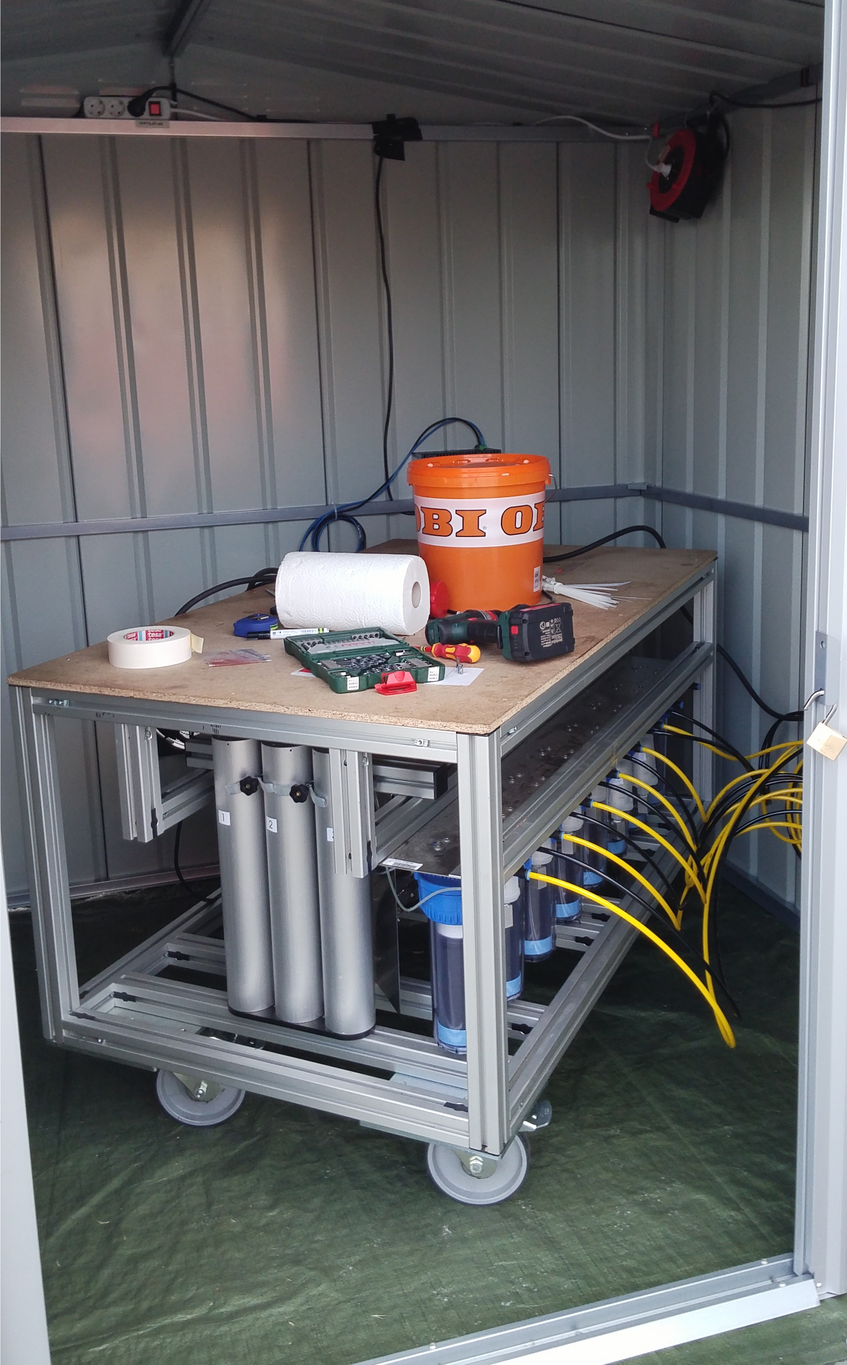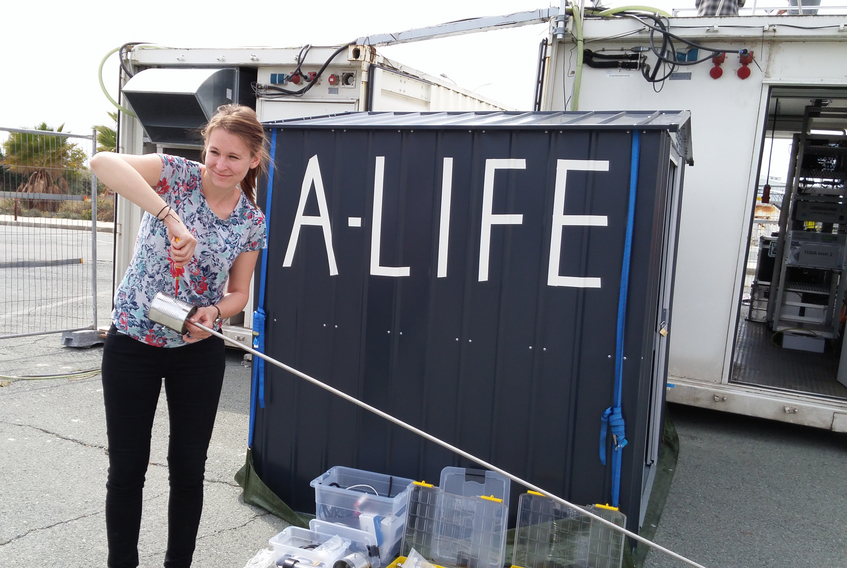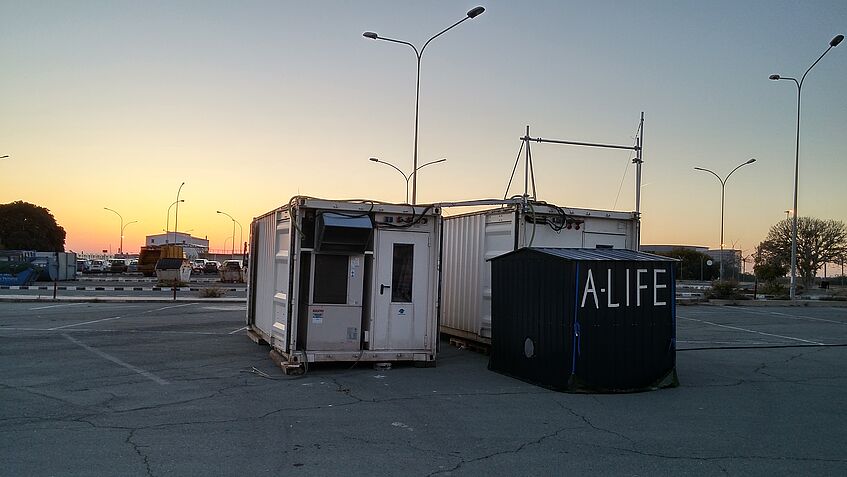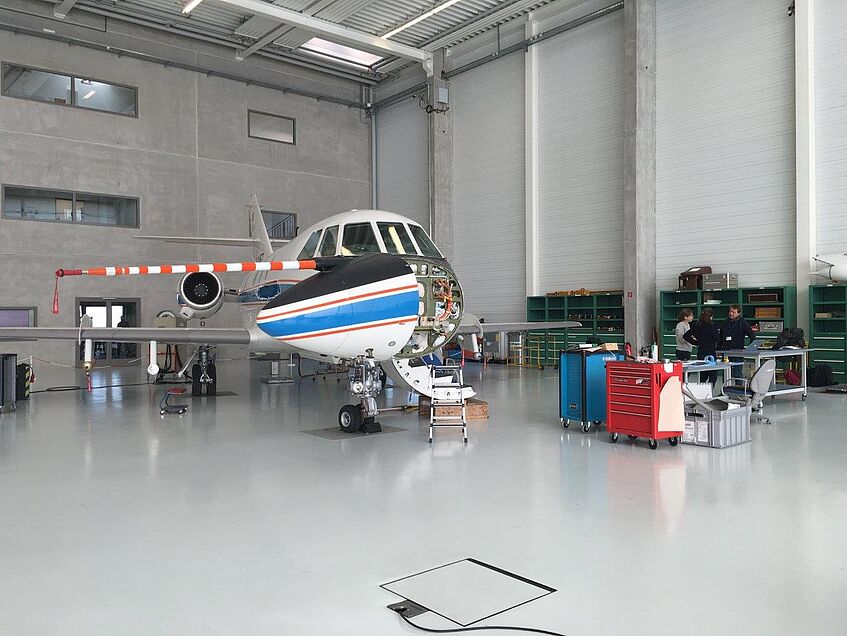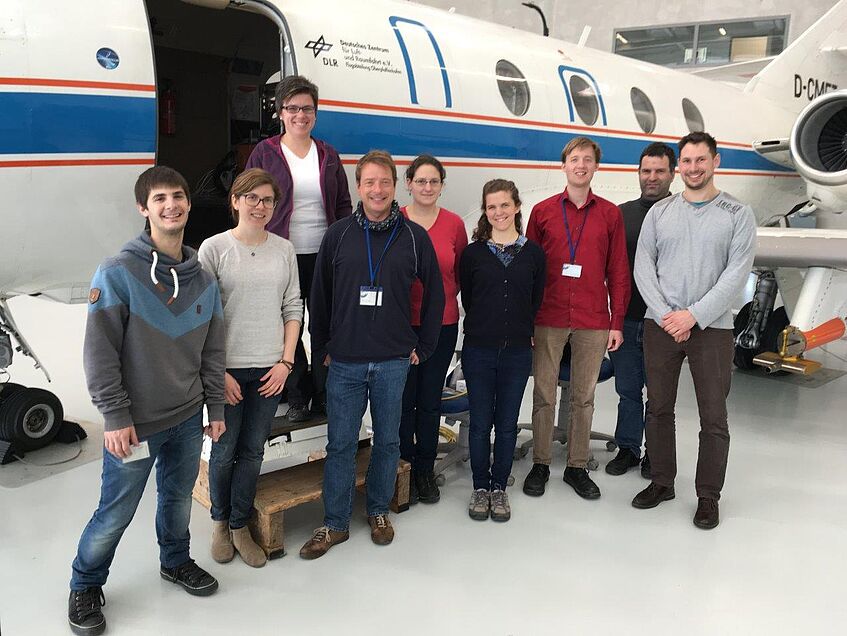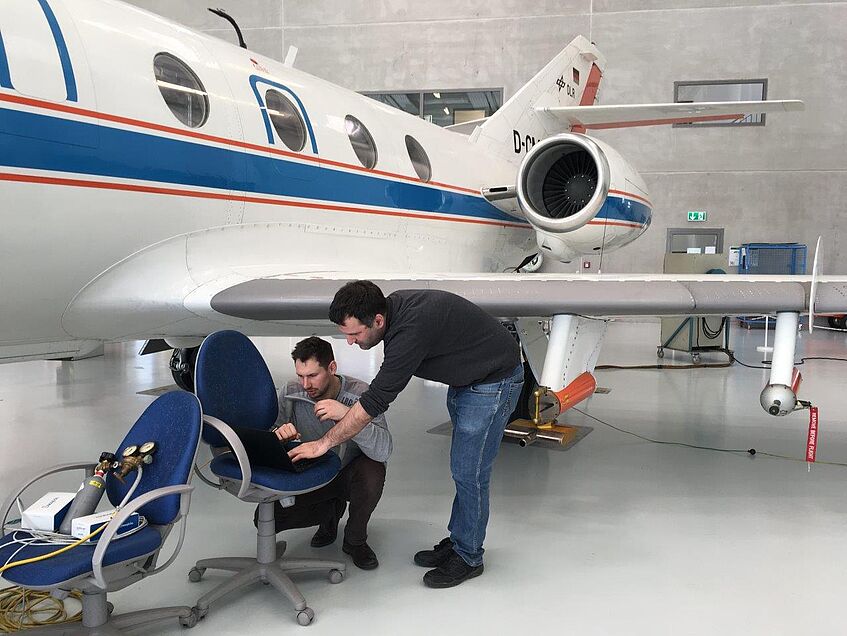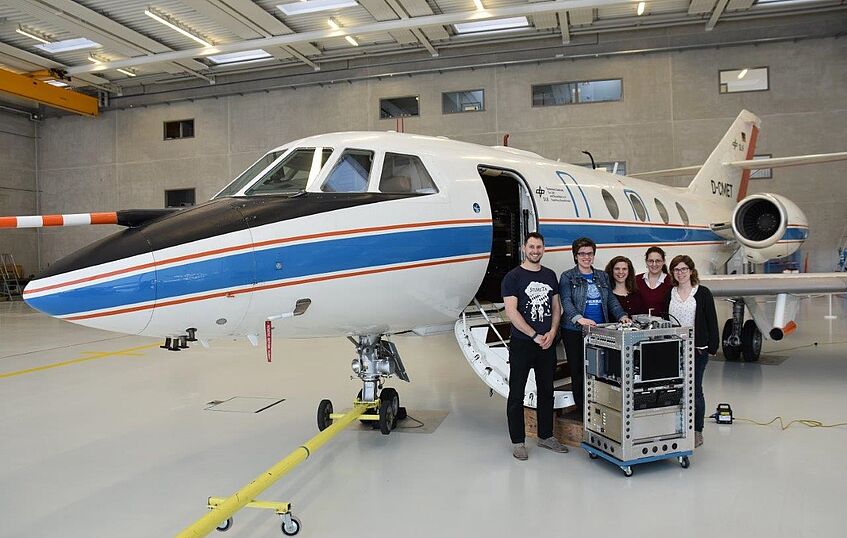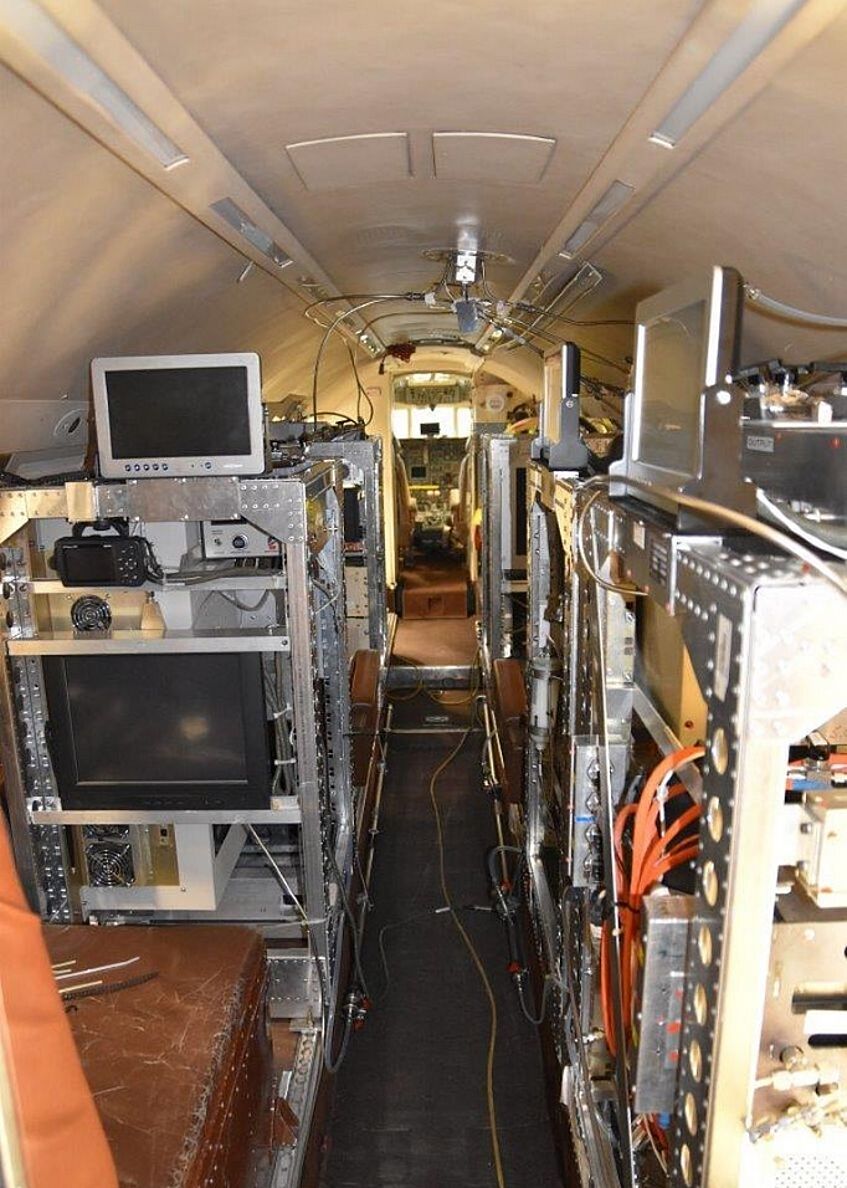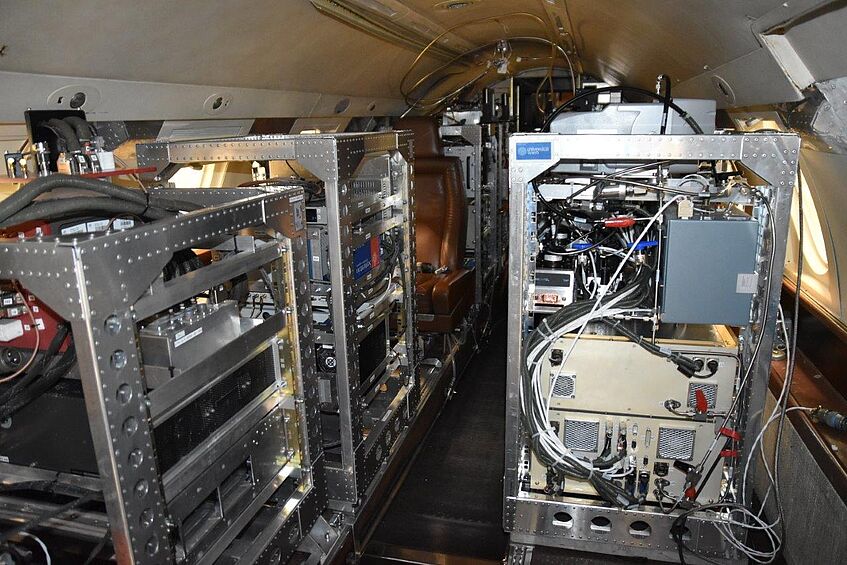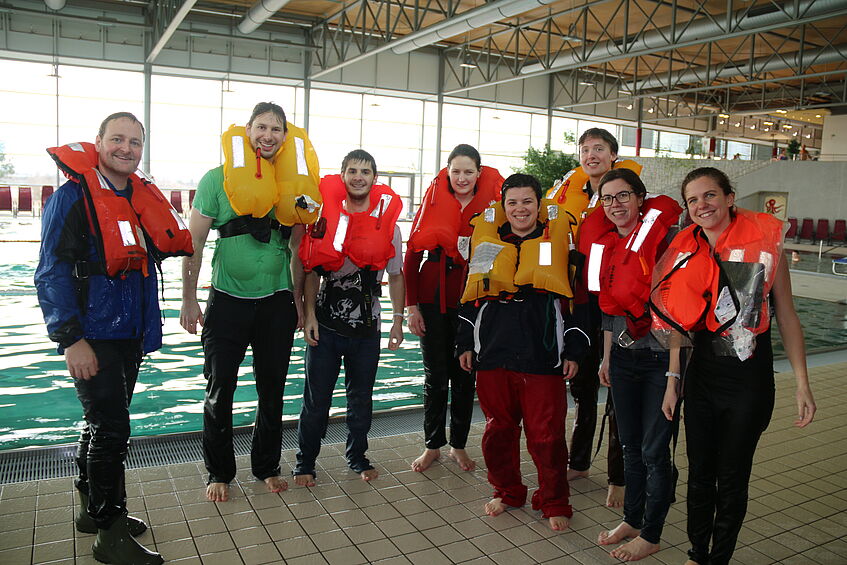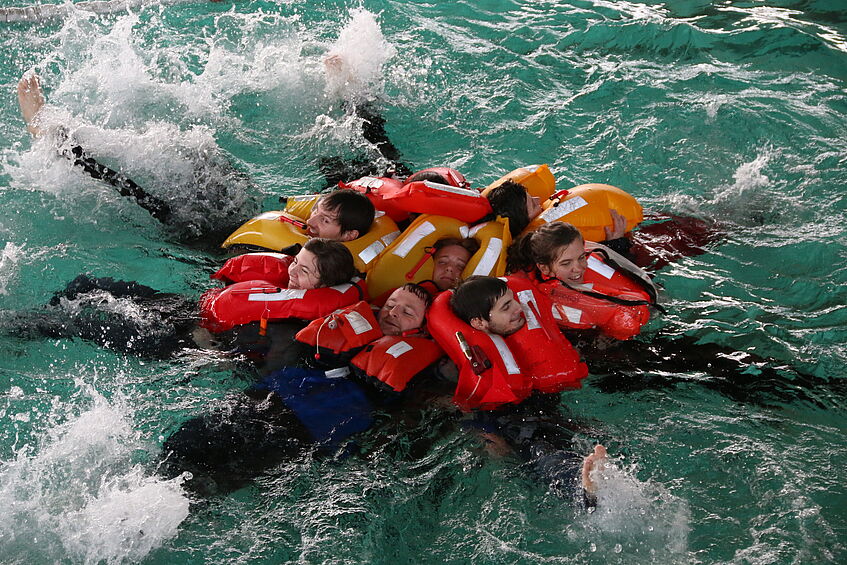A-LIFE
Absorbing aerosol layers in a changing climate: aging, lifetime and dynamics (A-LIFE)
A-LIFE is an ERC project at the University of Vienna with PI Bernadett Weinzierl.
Project start: 1 October 2015
Project end: 30 September 2022
This project has received funding from the European Research Council (ERC) under the European Union’s Horizon 2020 research and innovation programme under grant agreement No. 640458 (A-LIFE). In addition, the German Aerospace Center (DLR) provides funding for a significant amount of flight hours and aircraft allocation days for the A-LIFE aircraft field experiment, and two EUFAR projects (16 flight hours) are clustered with A-LIFE.
In this photo blog, we report about the preparations for A-LIFE and our measurements in spring 2017. Details about the project including a detailed project description, partners and mission calendar can be found on the A-LIFE project homepage.
Contact: Univ.-Prof. Dr. Bernadett Weinzierl
18 April 2017: Science team meeting
After a series of flights last week, we had the A-LIFE midterm meeting today at Paphos. Every group presented data, and we discussed highlights and most interesting findings. So far we had 11 flights including the two test flights and the two transfer flights. We have collected very exciting data including measurements of „polluted dust“/dust – black carbon mixtures, pure pollution, and as one of the highlights: Arabian/Middle East dust over Cyprus. In the remaining two weeks, we will have another 8-9 local flights.
03 - 29 April 2017: Intense period of measurement flights
After two successful test flights, the intense period of measurment flights for the A-LIFE campaign begins with the transfer flight of the DLR Falcon from Oberpfaffenhofen (Germany) via Cagliari (Italy) to Paphos (Cyprus) on 03 April 2018 (OBF - CAG - PFO).
After each flight, the on-board instruments need to be calibrated and maintained. On 29 April, the Falcon will head back to Oberpfaffenhofen via Heraklion (PFO - HER - OBF).
All 22 measuring flights (including the two test flights and transfer flights) are listed on the "Flight Overview"-page.
04 April 2017: Maintenance and calibration work on instruments after transfer flight on 03 April (OBF - CAG - PFO)
06 April 2017: Local flight to measure Middle East/Arabian dust at low altitudes and Saharan dust at high altitudes (PFO - PFO)
11 April 2017: Falcon flies a second time today, also performing a low approach at Paphos airport (PFO - PFO)
19. April 2017: Beginning of a Saharan dust outbreak. Crew waving goodbye to Falcon on its way to Malta (PFO - MLT - PFO)
31 March 2017: Another very interesing test flight
We took off at 07:35 UTC (09:35 local), flew to Mount Sonnblick Observatory where we arrived at around 08:00.
South of Sonnblick we saw enhanced aerosol concentrations in the valleys, but there were also scattering aerosol layers (probably remanants of dust) which we sampled in-situ. We flew boxes at FL180, FL160, and FL 140 around Mount Sonnblick and left the Sonnblick area around 08:55 UTC.
After completing the Sonnblick measurements, we climbed to FL250 heading towards Vienna where we arrived at ~09:15 UTC. The Vienna region was heavily polluted (up to an order of magnitude higher particle number concentrations than over the Munich area) and the pollution was visible as a brown layer. We flew boxes around Vienna in FL180 and FL120, but we were not allowed to do boxes at lower altitudes due to the air traffic situation. However, air traffic control (ATC) cleared us for a low approach at Vienna International Airport which gives us a full aerosol in-situ profile. The overflight at Vienna Airport was at 09:25:35 UTC. Before landing in Oberpfaffenhofen, we performed two additional constant altitude legs at FL120 and at 3000ft.
In summary, this flight will allow us to compare the aerosol loadings at two major European cities (Munich and Vienna) with an upper tropospheric background site (Mount Sonnblick Observatory). In addition, we detected elevated dust layers. From Vienna and at Sonnblick Observatory, also ground-based data are available.
Besides science, the test flight was very scenic and gave us gorgeous views from the Alps, Vienna, and the Munich area.
28 March 2017: Chasing dust over Germany and France
Today, we had the first A-LIFE test flight. The DLR Falcon research aircraft took off at 11:00 (09 UTC). We flew to France, where we made a low approach at Dijon airport. Later we shuttled in East-West direction at different altitudes along the Alps. We found dust layers below 5 km and filaments of dust layers up to 7-8 km, sampled pollution in the boundary layer in the Munich area and over Dijon, and saw gravity waves in the lidar measurements north of the Alps. It was a great opportunity to test our dust payload.
26 - 29 March: Ground station setup completed
All the instruments arrived in good shape and were installed inside and on top of the container by the ground crew. After connecting the inlets to the instruments, the ground station - situated on an old parking lot right next to the Paphos airport - is ready for operation.
17 – 25 March 2017: From the ground to the skies
In the past week, we proceeded with preparations for our big joint A-LIFE/CyCARE/PRE-TECT mission. In Oberpfaffenhofen (Germany), preparations of the airborne measurements were ongoing. In Paphos (Cyprus), the ground-based measurement containers including two TROPOS containers, an office container and the UNIVIE garden house were set-up. Results from worldwide observations with the portable Raman lidar systems POLLY including measurements in the Eastern Mediterranean are already available online.
Wednesday, 15 March 2017: A big step forward
Before we are ready to fly, our instruments have to pass the so-called ground test report (GTR) and the electromagnetic interference (EMI) test. Today, all instruments passed the GTR and the EMI test. A big milestone towards a successful A-LIFE mission!
Monday, 13 March 2017: instrument upload completed
- Lidar transceiver successfully integrated
- Tubing completed
Friday, 10 March 2017: Instrument upload almost done
After an intense week of instrument upload, all measurement racks including the brandnew aerosol measurement system A‐HEAD (Airborne High‐resolution Extinction, Absorption and scattering Detection system) of the University of Vienna are now installed in the German Aerospace Center (DLR) Falcon research aircraft. The last component to be integrated is the lidar transceiver which will follow on Monday.
Impressions of the instrument upload between 6 an 10 March 2017, Oberpfaffenhofen (Germany).
Thursday, 9 March 2017: Bits and pieces
- Installation of cables and sampling tubes for aerosol in-situ racks
Wednesday, 8 March 2017: Upload of the wind lidar system
- Lidar ground testing completed successfully
- Lidar racks installed
Tuesday, 7 March 2017: Upload of aerosol in-situ instruments
- CCNC rack installed
- SP2-OPC rack installed
- Instrument bench/lab checks ongoing for A-HEAD and lidar
Monday, 6 March 2017: Begin of instrument upload
Today, instrument upload for the A-LIFE mission started. We have now one week of time to get everything installed in the DLR Falcon research aircraft.
Sunday, 26 February 2017: Sea survival training
Every crew member flying on the Falcon research aircraft is required to participate in a safety training. Today, we went to Wiener Neustadt for the sea survival training. Besides theoretical lectures, we did exercises with a life raft in a swimming pool, and practiced with signal flares and fire extinguishers.

